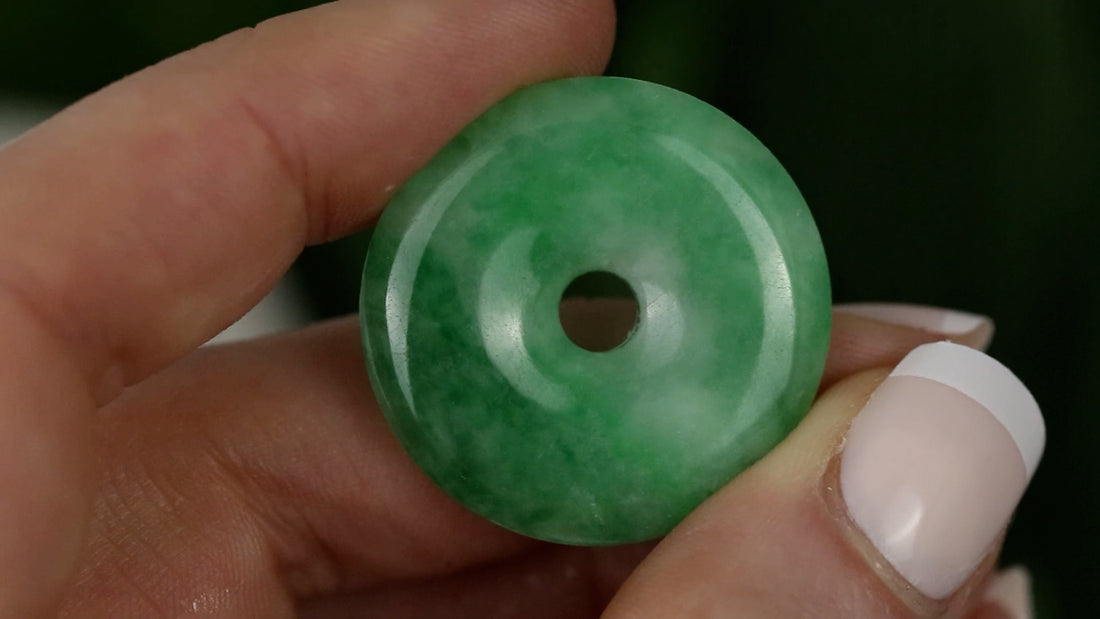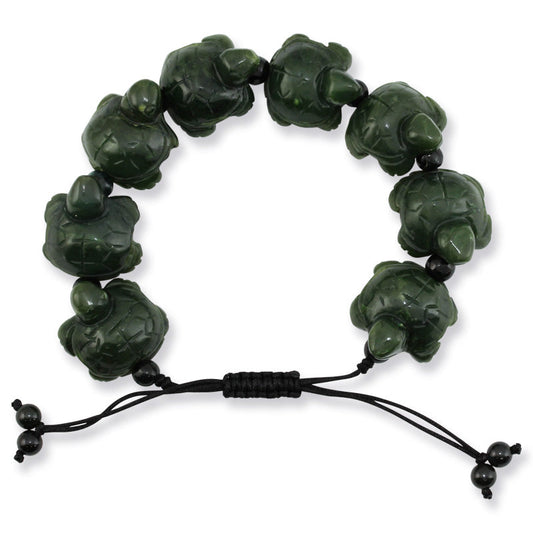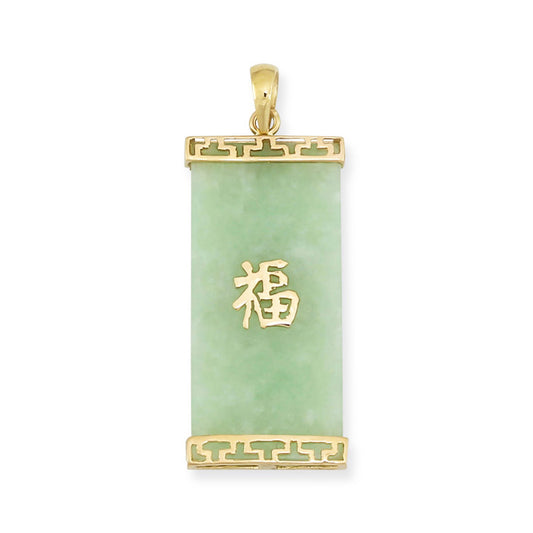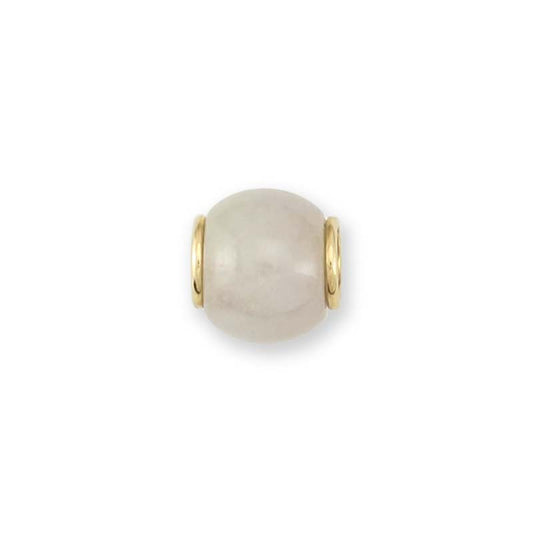What is “treated jade?”
Genuine jadeite jade can be treated in many different ways. The term “treated jade” encompasses an array of treatments including dying, polymer-impregnation, resin-coating, doublets and more. Treated jade is still technically “genuine” jadeite jade, however, it has entirely different color and attributes than it did when it was mined.

What is “natural jade?”
The term “natural jade” refers to genuine jadeite jade that has no treatment except for a thin coating of beeswax which does not change the appearance of the stone.
The term “natural” in gemology takes on different meanings depending on the gemstone in questions. Natural diamonds, for instance, are earth-mined diamonds. A diamond can be treated and still considered natural. Natural pearls are pearls that have been created without human intervention, but are chemically the same as cultured pearls which also come from a mollusk. This, unfortunately, leads to confusion among customers regarding the meaning of the word “natural.” It’s simply important to note that “natural” takes on a different meaning for diamonds and pearls than it does for jade, sapphire, and many other colored gemstones.
“Genuine” universally refers to gemstones that have been mined or cultured, as opposed to simulants or synthetics. “Synthetic” essentially means that a gemstone was created in a lab. There is no synthetic jade on the jewelry market today.
AGTA, the American Gem Trade Association, is the leading authority on colored gemstones in the United States. AGTA has developed a treatment code system for colored gemstones where “N” means “natural, untreated.” This is why treated jade is still considered genuine but not natural.
Now that we have clarified exactly what we mean by natural and treated jade, let’s discuss 5 reasons NOT to buy treated jade:

1. Treated jade is more brittle.
The two jades, nephrite jade and jadeite jade, are two of the toughest gemstones on the planet. However, treated jade is extremely brittle and breaks easily, often within the first year of wear.
The very lowest quality of jade is sent to be treated. This jade is often heavily fractured, having pale color and large crystal sizes. This quality of jade is not suitable for jewelry in the first place. When it is treated with acid-bleaching and polymer or resin impregnation (as in the case of B Jade and B+C Jade), the fractures expand from the pressure during the impregnation process. This causes the jade to be more brittle than it’s natural counterpart.
2. Treated jade has unstable color.
In the cases of jadeite jade that been dyed (C Jade and B+C Jade), color may change over time or upon prolonged exposure to sunlight. Natural, untreated jadeite jade has stable color and will not “fade.”
3. Treated jade has very little value.
Jadeite jade that has been impregnated with polymer, wax or resin (B Jade), is worth approximately 5-10% the value of it’s natural jade counterpart. Unfortunately, B Jade and B+C Jade are often unscrupulously sold as “natural,” and may even come with a report from a lab. This is why customers should only rely on reputable lab reports. Anyone with a laminator can make what appears to be a “cert,” and the internet has opened up a world of opportunity for forgeries. (Pro tip: If buying a jade stone secondhand that comes with a report from a reputable lab, call the lab with the report number to confirm the information.)
In the case of jadeite jade that has been dyed (C Jade and B+C Jade), this jade is worth <$20-$50. Be careful not to overpay for dyed jadeite jade, thinking that it is natural.
If a seller is transparent about their jade’s treatment, you love the piece, and it fits in your budget – by all means, buy that piece! However, be warned of the rampant online sellers presenting treated jade as natural for unfairly high prices. Treated jade and natural jade are different, and those differences should be explained honestly before the sale.





